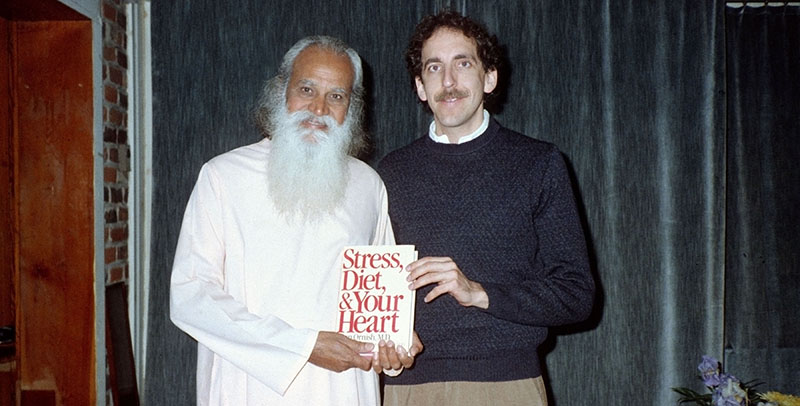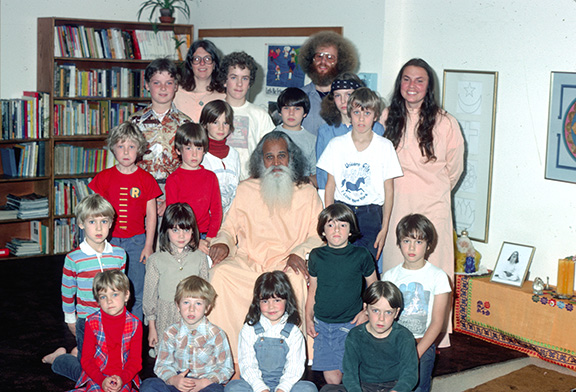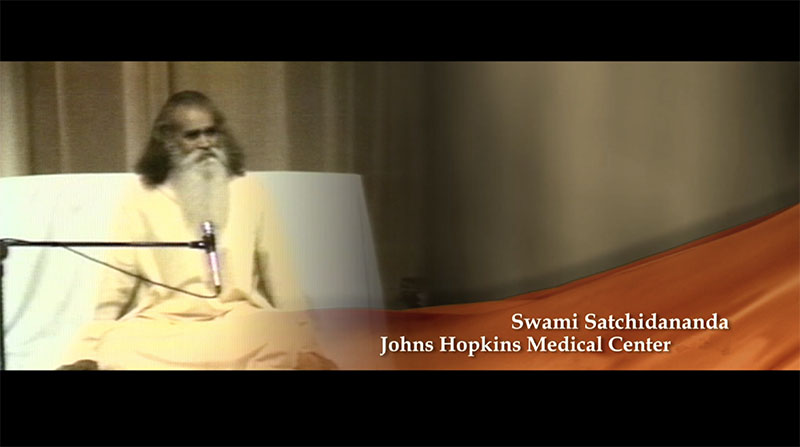From the early-1970s onward, Swami Satchidananda received more and more requests to speak about his ideas regarding illness vs. wellness, dis-ease, preventive and integrative medicine. In 1971 and 1977, he lectured at the Johns Hopkins Medical School, Baltimore, Maryland. Also in 1977, he lectured at the National Institute of Health (NIH), Washington, D.C. to 600 doctors, nurses, technicians, and guests. This lecture inspired a successful Yoga program at NIH for patients and staff. Several of the doctors who attended the lecture began studying with Swami Satchidananda, even becoming Yoga instructors themselves. Their interests and lobbying led, in 1991, to the establishment of the National Center for Complementary and Integrative Health (NCCIH) at NIH.

Swami Satchidananda and Dr. Ornish
In 1977, Swamiji was invited to speak at the Baylor School of Medicine, Houston, Texas. He also conducted a Yoga retreat for cardiac patients in conjunction with early research planning by Dr. Dean Ornish, who was a student at Baylor at the time. This research, incorporating Yoga as lifestyle medicine, became the basis for Dr. Ornish’s trailblazing “Preventing and Reversing Heart Disease” program.
Yet another program Swamiji gave that same year was a one-day workshop in “Integral Health,” at the Mandala Wholistic Health Society Conference (San Diego California), on his approach to holistic health and leads a demonstrating the methods that he developed for Integral Health Services, his holistic health center established in Connecticut in 1976.
 In September1977, Swamiji opened the Integral Yoga School, the first state (Connecticut) accredited elementary school to include a Yoga curriculum. The school was renamed the Yogaville Vidyalayam when it moved to Satchidananda Ashram–Yogaville in Virginia in the early 1980s.
In September1977, Swamiji opened the Integral Yoga School, the first state (Connecticut) accredited elementary school to include a Yoga curriculum. The school was renamed the Yogaville Vidyalayam when it moved to Satchidananda Ashram–Yogaville in Virginia in the early 1980s.
[photo: Some of the first students of the Integral Yoga School included Weezer lead-singer Rivers Cuomo (2nd row kneeling in green shirt), Emmy/Tony nominated actor Liev Schreiber (4th row, standing far left), and Oculus virtual reality architect Atman Binstock (first row, 2nd from left).]

Recent Comments